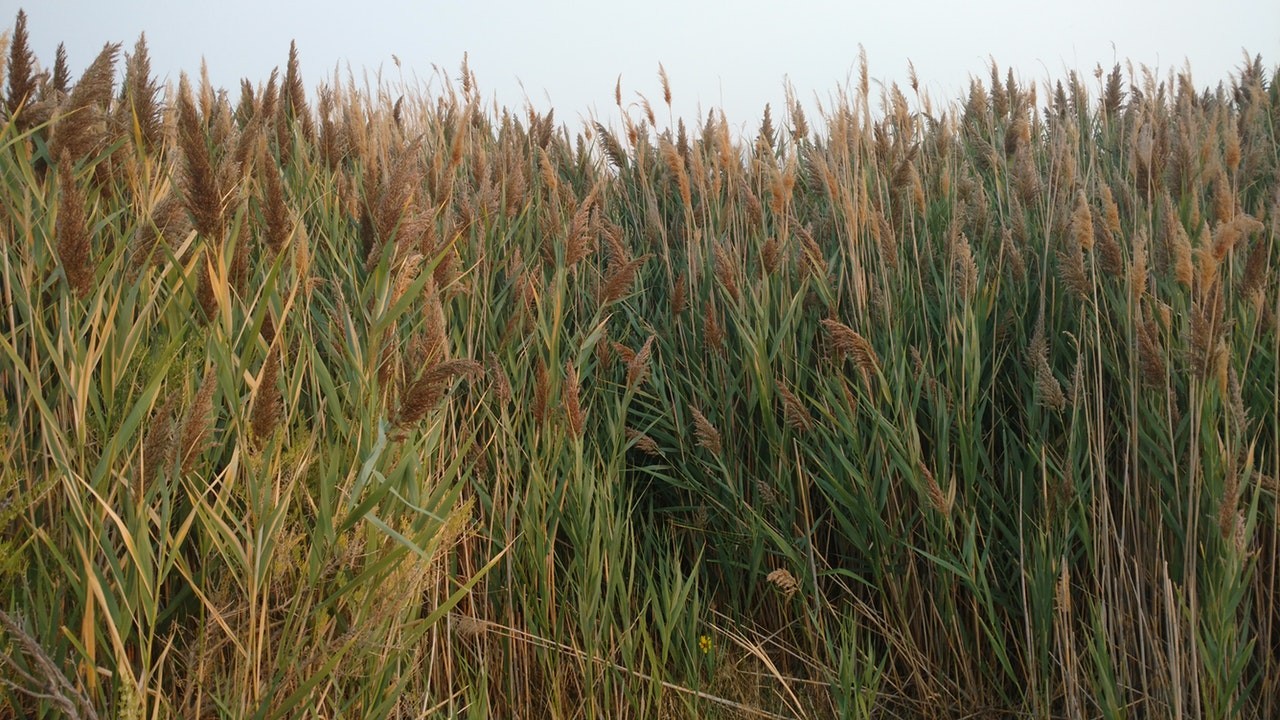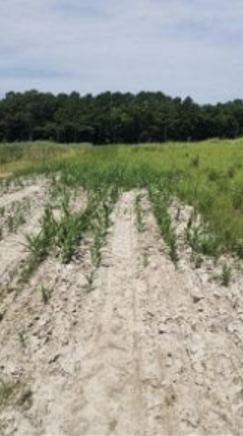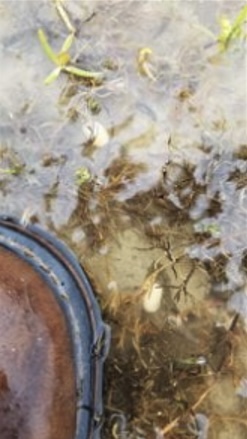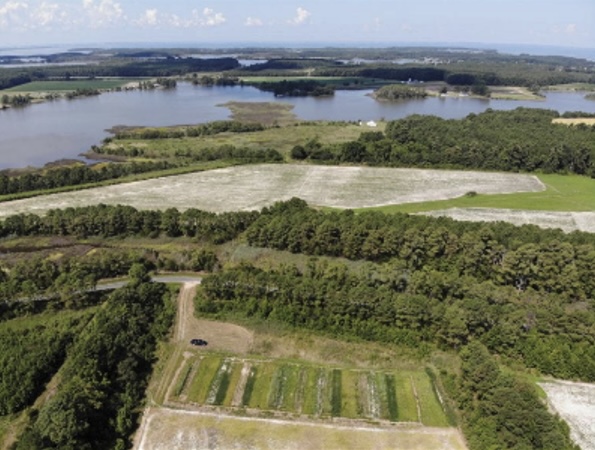
Salt Impacted Agricultural Lands

Saltwater intrusion includes both surface and subsurface additions of saline water to the soil profile. This occurs on landscapes adjacent to the Chesapeake Bay and other brackish waters, including tidal creeks and bays. Here, vegetation, including forest and farmland, is not adapted to higher levels of salts.
Due to climate change and some subsidence along Delmarva, saltwater intrusion has begun to change our shoreline. Adaptation and remediation will be necessary for land owners and those interested in protecting natural resources.
Impacts
For agricultural (or any plant) production, salts are necessary in the form of plant nutrients, but become toxic in excessive quantities. There is a dual issue of salts for crop production, as they may also reduce soil quality for water infiltration and root movement.
Salts such as calcium, magnesium, and sulfur are necessary for plant growth, but saltwater intrusion can raise these levels higher than necessary. As a result, salt water that washes over agricultural fields during storm events and extreme tides can severely degrade a soils’ ability to produce traditional crops like corn and soybeans. This is already happening to some of Delaware’s coastal farmers and the frequency and extent of these flooding events may increase in the future as a result of climate change and sea level rise if no other preventative measures are implemented.
Sodium is a separate issue, as it can cause similar issues at high salt levels, but is also not an essential plant nutrient and can be toxic at lower levels than nutrients such as calcium.

Additional resources
AgroEcology Lab StoryMap: https://storymaps.arcgis.com/stories/3d7859380ffa4bd08e7d5540bcf1870d
USGS Saltwater Intrusion Explanation: https://www.usgs.gov/mission-areas/water-resources/science/saltwater-intrusion?qt-science_center_objects=0#qt-science_center_objects
Soils and Salts: From Fertilizer to Tidewater (MidAtlantic Women in Agriculture):
Soils and Salts: From Fertilizer to Tidewater: youtube.com/watch?v=5qEPdQ_jo94
Remediation
Issues with saline soils are well known in other parts of the world. The western United States has issues with soil salinity and plant growth due to excess salts from irrigation or as well as lower rainfall than the east coast. Many Extension resources exist from Land-Grant Universities out west. Keep in mind that if your soil has a water table close to the surface, standard remediation through gypsum or leaching may be limited.


Additional Resources
Managing Saline Soils in North Dakota: https://www.ag.ndsu.edu/publications/crops/managing-saline-soils-in-north-dakota
Managing Salt Affected Soils for Crop Production – Pacific Northwest Extension (Idaho, Washington, Oregon): https://catalog.extension.oregonstate.edu/sites/catalog/files/project/pdf/pnw601.pdf
Salinity and Plant Tolerance (Utah State): https://digitalcommons.usu.edu/cgi/viewcontent.cgi?article=1042&context=extension_histall
Managing Soil Salinity (Texas A&M): https://agrilifeextension.tamu.edu/library/gardening/managing-soil-salinity/Maryland’s Plan to Adapt to Saltwater Intrusion: https://planning.maryland.gov/Documents/OurWork/envr-planning/2019-1212-Marylands-plan-to-adapt-to-saltwater-intrusion-and-salinization.pdf
Investigating Salt Tolerant Crops
UD Cooperative Extension, in collaboration with other partners, is investigating an alternative salt tolerant crop that may be able to sustain the productivity of these impacted lands.

Seashore mallow is a perennial wetland plant native to the east and gulf coasts of the US and can therefore tolerate salty soils. For the past 10 years, UD researchers in the College of Earth, Ocean, and Environment, have been studying the plant, its ability to be cultivated as an alternative agriculture crop, and potential marketable products. Marketable products are possible from both the seeds and stems and the plant itself provides ecosystem services.
A recent small pen study has shown that the chipped stem material proves promising as a new, local, source of poultry house bedding. If additional research and assessment support these findings, there is great potential for the use of seashore mallow by the Delaware and Delmarva poultry industry as the traditional bedding material, pine shavings, have decreased in availability and increased in cost.
UD Extension is interested in building relationships with farmers with salt-impacted lands to assess the interest and feasibility of growing seashore mallow to support our research needs and develop this new poultry bedding market. If you manage salt impacted agricultural lands, we want to hear from you!
Seashore Mallow Factsheets
Journal publications for further reading
- N. Voutsina et al. 2015. The Facilitative role of Kosteletzkya pentacarpos in Transitioning Coastal Agricultural Land to Wetland During Sea Level Rise. Estuaries and Coasts Vol. 38, No. 1: 35-44.
- S.F. Vaughn. 2013. Seashore mallow (Kosteletzkya pentacarpos) stems as a feedstock for biodegradable absorbents. Biomass and Bioenergy 59: 300-305.
- B.R. Moser et al. 2013. Seashore mallow (Kosteletzkya pentacarpos) as a salt-tolerant feedstock for production of biodiesel and ethanol. Renewable Energy 50: 833-839.
- L. Fan et al. 2011. Preparation, Composition, Structure and Properties of the Kosteletzkya virginica Bast Fiber. Fibers and Polymers Vol. 12, No. 7: 911-918.
Contact Us
Jarrod Miller
Agronomy Specialist
Location: Carvel Research & Education Center (Georgetown)
Phone: (302) 856-7303
Email: jarrod@udel.edu
Jennifer Volk
Associate Director of Cooperative and Environmental Quality Specialist
Location: Paradee Center (Dover)
Phone: (302) 730-4000
Email: jennvolk@udel.edu
